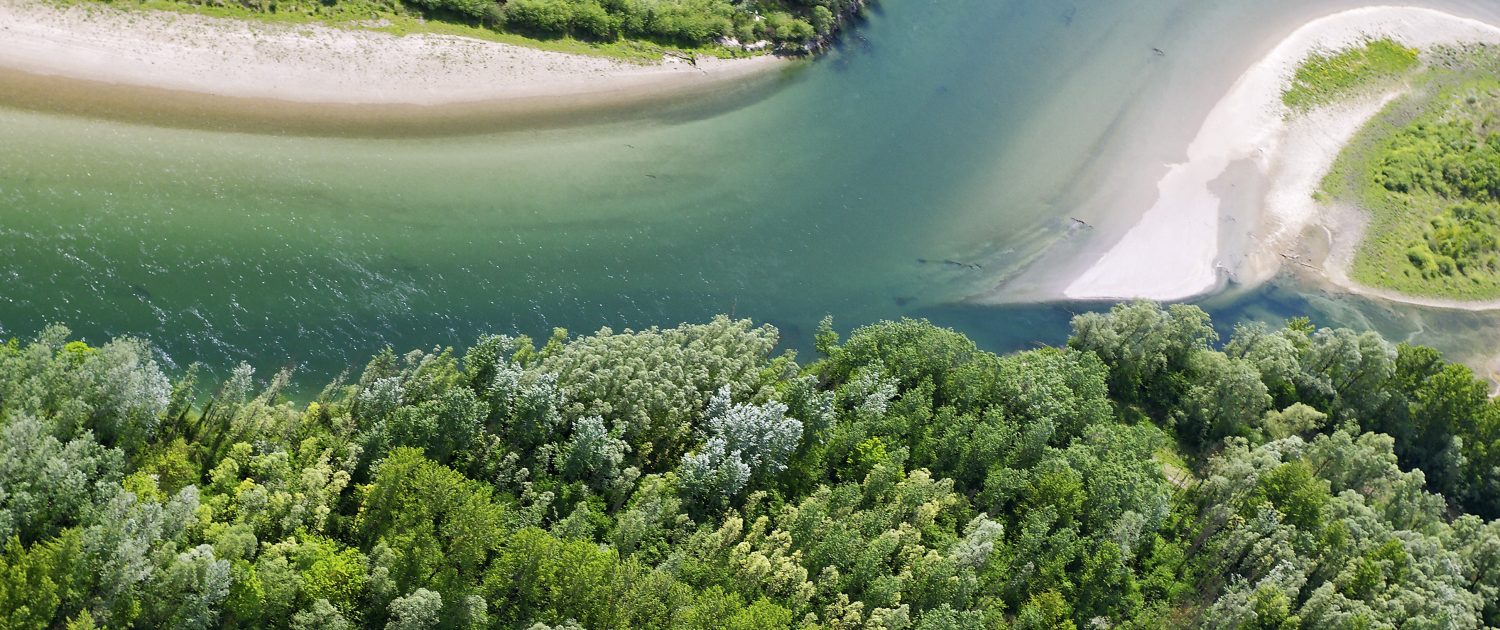The Drava is a 725 km long river that connects the Alpine regions of Italy, Austria and Slovenia with the Pannonian regions of Croatia and Hungary. It is one of the biggest tributaries of the Danube and together with the Mura these three rivers form the great European river lifeline. The Drava River is also the backbone of the planned 5-country Transboundary UNESCO Biosphere Reserve “Mura-Drava-Danube”, which, once established, will be Europe’s largest riverine protected area (700 km) and the world’s first penta-lateral (Croatia, Austria, Hungary, Slovenia and Serbia) UNESCO Biosphere Reserve. Moreover, the project area and its surroundings contain the largest freshwater reservoir in overall Croatia.
The Drava’s spring is in the Sexten Dolomites near Dobbiaco (Toblach) in Italy, 1450 meters above sea level. It flows eastwards through Austria (Tyrol and Carinthia), where it forms the “Drautal”, the longest longitudinal valley of the Alps. From there it flows south-eastwards through Slovenia, meanders through Croatia and southern Hungary, where it forms the border between the two countries, and then the Drava finally reaches the Danube River near the town of Osijek.
The Drava is a typical pluvio-glacial river that began to develop in the Neogene with the formation of the initial tectonic trench. Sedimentation processes combined with tectonic movements and later river erosion processes have formed two important river terraces, as well as smaller depressions. This was the basis for alluvial processes that created numerous and diverse habitats with large floodplains, marshes, oxbows and steep banks.
Drava has its highest flow rate in July, when the glaciers melt, and in November, due to autumn rainfall from the wide Alpine hinterland. The precipitation area of the Drava in Italy and Austria covers 10.964 km², in Slovenia another 2.700 km² and in Croatia 7.015 km².
The section of the Drava covered in the project is one of the last semi-natural water courses in Central Europe. The construction of 22 hydropower plants in Austria, Slovenia, and Croatia crosscut the river and left only a few natural sections of its entire 700 kilometer flow; most of those sections are in Croatia.
The 7 DRAVA LIFE project sites are situated between Otok Virje (rkm 314,3) and Podravska Moslavina (rkm 96) and the project covers the greater part of Croatian Drava (218,3 km).

